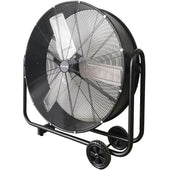The Growing Need for Ergonomic Workspaces
Modern professionals are increasingly spending extended hours working on computers, creating a significant demand for ergonomic workspaces. The transition to remote work, accelerated by technological advancements, has further emphasised the importance of well-designed setups in home offices. Poor workstation ergonomics can contribute to a variety of health issues, including musculoskeletal discomfort, eye strain, and prolonged neck or back pain.
By incorporating tools like adjustable laptop stands, workers can align their screens to eye level, mitigating posture-related stress. During Days ergonomic workspaces rely on optimising chair height, desk arrangement, and peripheral placement to promote a healthier, more productive working environment. Employers and individuals alike are recognising this necessity.
Understanding the Basics of Laptop Stands
Laptop stands are ergonomically designed tools that elevate a laptop to an optimal height, aligning the screen with the user’s eye level. They aim to reduce strain on the neck, back, and shoulders caused by prolonged hunching. These stands are available in various materials like aluminium, plastic, and wood, offering both durability and aesthetic appeal. Key features include adjustable height settings, a stable base, and sometimes an integrated cooling mechanism to prevent overheating. By promoting better posture, a laptop stand can enhance long-term comfort. Users can pair them with external keyboards and mice for improved ergonomics.
How Poor Posture Impacts Neck and Spine Health
Poor posture places undue strain on the neck and spine, causing discomfort and potential long-term health issues. When sitting, slouching or craning the neck forward increases pressure on cervical vertebrae, leading to muscle fatigue and tension. This misalignment forces the spine into unnatural curves, weakening its structural support and causing chronic issues.
Prolonged poor posture can contribute to:
- Neck Pain: Tension in neck muscles can lead to stiffness and reduced mobility.
- Spinal Misalignment: Uneven pressure on intervertebral discs increases the risk of degeneration.
- Poor Circulation: Tense muscles can restrict blood flow, affecting tissue health.
- Headaches: Stress from strained muscles often causes tension headaches.
Correct posture helps preserve spinal integrity while reducing muscular strain.
The Role of Laptop Stands in Enhancing Posture
Laptop stands play a crucial role in promoting proper posture by aligning the screen with the user’s natural eye level. Without a stand, individuals often hunch over, leading to rounded shoulders and strain on the neck and spine. By raising the laptop, a stand encourages a neutral spine position, reducing the risk of discomfort and long-term musculoskeletal issues.
Benefits to Posture Include:
- Elimination of Forward Head Posture: Supports a straight neck alignment, alleviating pressure on cervical vertebrae.
- Improved Upper Body Ergonomics: Aligns elbows and wrists while typing, minimising awkward arm positions.
- Enhanced Sitting Comfort: Encourages balanced weight distribution across the back and hips.
Transitioning to ergonomic setups with laptop stands ensures sustainable posture improvement during prolonged device use.
Proper Laptop Stand Positioning: Dos and Don'ts
Dos:
- Adjust for Eye Level: Ensure the top of the screen is at or just below eye level to reduce neck strain.
- Maintain a Neutral Wrist Position: Use an external keyboard and mouse to prevent awkward hand postures.
- Keep the Screen at an Arm’s Length: Position the laptop approximately 20–30 inches away to avoid eye strain.
- Use a Stable Surface: Place the stand on a sturdy desk or table to prevent wobbling or instability during use.
- Set the Screen Angle Correctly: Tilt the screen slightly back, around 10–20 degrees, for optimal visibility.
Don'ts:
- Avoid Placing It Too High or Low: Incorrect heights force neck bending, leading to discomfort.
- Refrain from Over-Tilting: Excessive screen angles can cause glare, impacting visibility and posture.
- Do Not Use on Uneven Surfaces: This can create instability, making typing and viewing awkward.
- Skip Perching on a Sofa or Bed: Improper seating impacts posture and negates the ergonomic benefits of a stand.
- Ignore Regular Adjustments: Keep adjusting the setup as posture or seating changes occur.
Key Features to Look for in an Ergonomic Laptop Stand
- Adjustability The stand should allow for height and angle adjustments to ensure proper screen alignment with eye level, reducing strain on both the neck and eyes.
- Stability A solid build and anti-slip base are essential to keep the laptop steady, especially during heavy typing or when placed on smooth surfaces.
- Portability Lightweight and foldable designs are ideal for those who work in multiple locations or require mobility.
- Ventilation Ensure the stand offers proper airflow, such as open or perforated structures, to prevent overheating of the laptop.
- Durability Materials like aluminium or reinforced plastic provide longevity, supporting frequent use without compromising sturdiness.
Transitioning between these features ensures a balance between comfort and functionality for better posture.
Scientific Evidence Linking Laptop Stands to Posture Improvement
The use of laptop stands has been supported by various scientific studies aimed at understanding ergonomic effects on posture. Research indicates that raising laptop screens to eye level reduces strain on the neck by encouraging a more neutral spine alignment. Ergonomics experts have found that adjustable laptop stands help users maintain a balanced posture, preventing hunching over screens.
- A study published in the "Journal of Physiological Ergonomics" highlighted how elevated screens mitigate forward head posture.
- Research at Cornell University demonstrates that angled stands reduce wrist extension during typing, further improving overall posture.
These findings underline the importance of optimised workstation setups for spinal health and comfort.
Preventing Long-Term Health Issues with Better Ergonomics
Poor laptop posture can lead to chronic musculoskeletal issues over time, including repetitive strain injuries (RSIs) and spinal misalignment. By elevating the screen to eye level with a laptop stand, individuals can reduce the frequent forward bending of the neck, which often contributes to neck strain and upper back pain. Consistent ergonomic practices, such as maintaining a neutral wrist position and aligning the monitor with the user's eye line, can prevent carpal tunnel syndrome and shoulder tension.
Prolonged poor ergonomics is also linked to issues like reduced lung capacity due to slouching. Adjusting workspace conditions helps mitigate these risks effectively.
Comparing Laptop Stands: Adjustable vs Fixed Options
Laptop stands are available in adjustable and fixed designs, each catering to different needs. Adjustable stands offer flexibility, allowing users to modify height and angle for optimal posture. This versatility is ideal for people who frequently switch between sitting and standing desks or prefer customisable viewing angles.
On the other hand, fixed stands provide a sturdy, non-movable option. These stands are suited for individuals who maintain consistent working setups, offering long-term stability and minimalist designs.
Key differences also include portability. Adjustable stands are typically lightweight and collapsible, while fixed designs tend to be bulkier but more robust. Evaluating usage habits can guide the selection process.
Practical Tips to Set Up an Ergonomic Laptop Workspace
- Use a laptop stand: Elevate the screen so the top of the monitor is at eye level to prevent straining the neck.
- Invest in an external keyboard and mouse: Position them at elbow height to maintain a neutral wrist posture.
- Adjust your chair: Ensure feet are flat on the floor and knees are at a 90-degree angle.
- Position the laptop at arm's length: This reduces eye strain and allows for a comfortable viewing distance.
- Optimise lighting: Avoid glare by positioning the screen perpendicular to windows or using curtains.
- Take breaks: Stand or stretch frequently to prevent prolonged sitting.
The Financial and Productivity Benefits of Using Laptop Stands
Laptop stands can lead to financial savings and productivity gains by fostering a healthier and more efficient workspace. Improved posture reduces the likelihood of costly medical treatments for back and neck issues. This translates to fewer sick days and enhanced employee well-being in workplaces. Increased comfort provided by stands allows extended focus during tasks, boosting overall output.
Ergonomic adjustments reduce the risk of equipment damage caused by improper positioning, prolonging device lifespan. Portable designs enable flexible work setups, essential for hybrid work environments. The one-time investment in a durable laptop stand offers long-term benefits, saving money while creating a healthier, more productive work routine.
Common Myths About Laptop Stands Debunked
- Laptop Stands Overheat Devices Some believe using a laptop stand leads to overheating, but most stands promote airflow by elevating the device. Many designs include perforations or open frames to encourage heat dissipation.
- They Are Unstable Concerns about stability are common, but high-quality stands are built with durable materials and anti-slip features. Choosing a stand suited to the laptop's size ensures steady support.
- Only for Professional Use It's a misconception that stands cater solely to professionals. In truth, students, gamers, and casual users benefit equally from the ergonomic improvements.
- Adjustments Are Complicated Many assume stands are difficult to adjust, yet most modern designs feature intuitive mechanisms for setting up the desired height and angle effortlessly.
These myths often hinder users from experiencing the ergonomic benefits of using laptop stands.
Lifestyle Changes Beyond Laptop Stands for Neck Pain Relief
Addressing neck pain involves more than just using ergonomic tools. Incorporating regular exercise into one's routine enhances muscle strength and flexibility, reducing strain on the neck.
Helpful Practices Include:
- Stretching exercises: Neck, shoulder, and upper-back stretches relieve tension.
- Mindful posture correction: Regularly assessing and adjusting seated and standing postures helps minimise chronic discomfort.
- Frequent breaks: Repositioning every 30–60 minutes avoids stiffness during prolonged laptop use.
- Ergonomic furniture: Chairs with lumbar support and height-adjustable desks complement laptop stands.
Proper hydration, adequate sleep, and stress management further aid in reducing neck pain, creating a holistic approach to wellness. Transitioning to these habits ensures sustained relief and prevention.
Real-Life User Stories: Success with Improved Posture
Many individuals have witnessed significant changes in their posture and overall health by switching to adjustable laptop stands.
Key Experiences Shared by Users:
- Improved Comfort: Users report reduced neck stiffness and shoulder pain after aligning their screens at eye level.
- Enhanced Productivity: Professionals claim that better posture has led to increased focus during prolonged work sessions.
- Physical Recovery: Some experienced relief from chronic discomfort that had plagued them due to poor desk setups.
"A laptop stand transformed my work life—I feel energised and pain-free daily," one office worker revealed.
These stories underline the immense value in adopting ergonomic tools.
Final Thoughts: Investing in Your Health with Laptop Stands
A laptop stand offers more than convenience—it becomes an essential tool for maintaining ergonomic alignment during prolonged computer use. Elevating the screen ensures the user's eye level is aligned, minimising strain on the neck and shoulders. This preventative measure can help reduce the likelihood of chronic pain associated with sedentary habits.
Key health benefits include:
- Promoting upright posture by correcting screen height.
- Reducing muscle tension in the neck and upper back.
- Supporting long-term spinal health through improved alignment.
These benefits highlight the role of a laptop stand in safeguarding physical wellness while boosting productivity in work or study environments.


















































